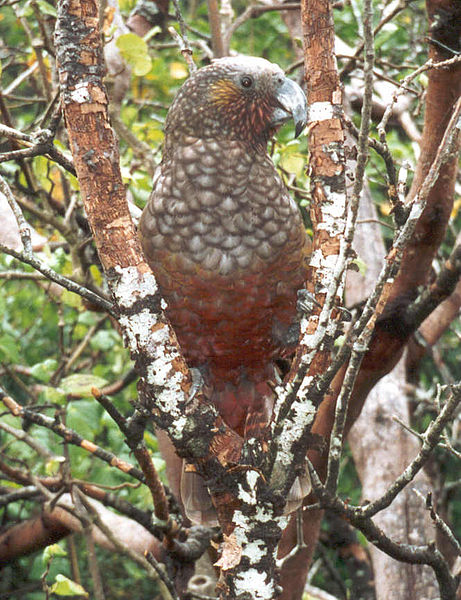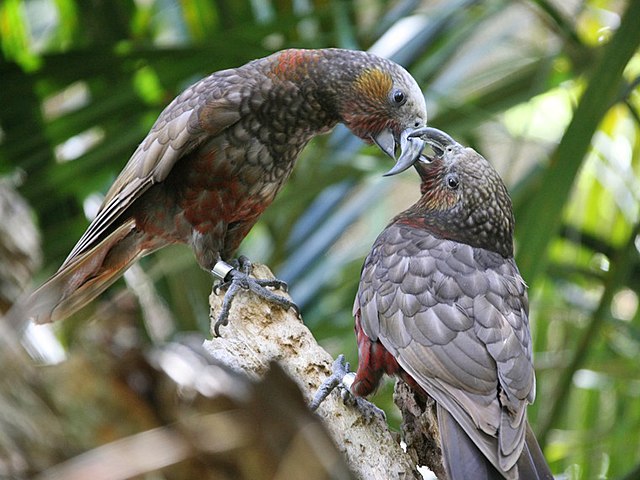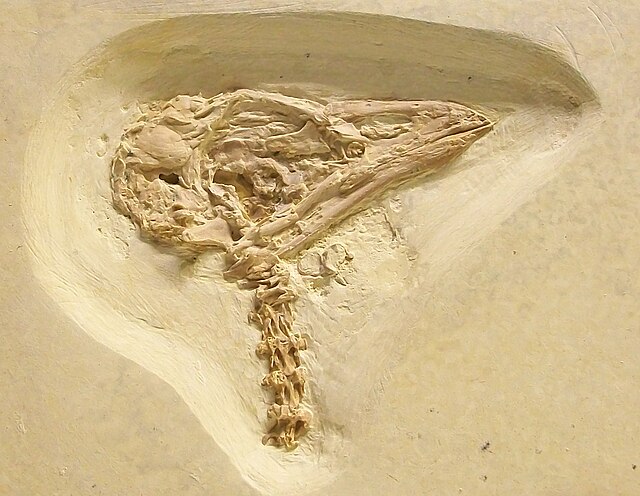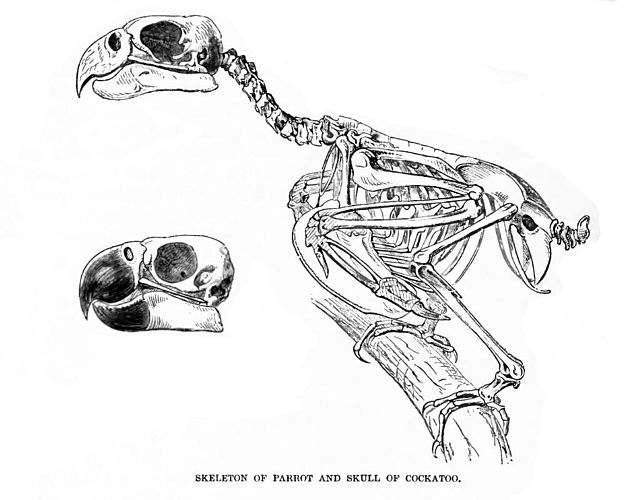The genus Nestor is one of the two extant genera of the parrot family Strigopidae. Together with the kākāpō, and the extinct parrots in the genus Nelepsittacus, they form the parrot superfamily Strigopoidea. The Nestor's genus contains two extant parrot species from New Zealand and two extinct species from Norfolk Island, Australia and Chatham Island, New Zealand, respectively. All species are large stocky birds with short squarish tails. A defining characteristic of the genus is the tongue, which is tipped with a hair-like fringe. The superficial resemblance of this tongue to that of lorikeets has led some taxonomists to consider the two groups closely related, but DNA evidence shows they are not.
Nestor (genus)
Image: Kea (Nestor notabilis) on ground 8
Image: Kaka Stewart Island 1c
Image: Kaka Parrots
Parrots (Psittaciformes), also known as psittacines, are birds with a strong curved beak, upright stance, and clawed feet. They are conformed by four families that contain roughly 410 species in 101 genera, found mostly in tropical and subtropical regions. The four families are the Psittaculidae, Psittacidae, Cacatuoidea (cockatoos), and Strigopidae. One-third of all parrot species are threatened by extinction, with a higher aggregate extinction risk than any other comparable bird group. Parrots have a generally pantropical distribution with several species inhabiting temperate regions as well. The greatest diversity of parrots is in South America and Australasia.
Parrot
Fossil skull of a presumed parrot relative from the Eocene Green River Formation in Wyoming
Skeleton of a parrot
Blue and gold macaw (Ara ararauna) skeleton on display at the Museum of Osteology.








